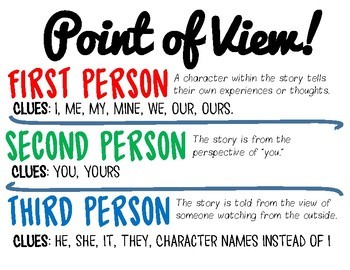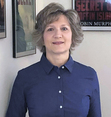What's Your Point of View?
 Hello awesome readers and writers! In today's blog post I'm going to talk about your point of view. No, I'm not asking for your opinion, let's face it, we all have one, but I'm going to discuss what your point of view is when it comes to writing.
Hello awesome readers and writers! In today's blog post I'm going to talk about your point of view. No, I'm not asking for your opinion, let's face it, we all have one, but I'm going to discuss what your point of view is when it comes to writing.Now, many writers have an opinion about how many actual points of view there are, but I want to share four basic approaches: first person, second person, third person limited, and third person omniscient. First Person - is the "I" voice, where all the narration is written as if the narrator were speaking directly to the readers - "I knew someone had stolen my wallet, but it would be impossible for me to find the culprit on the crowded subway." The first person point of view has many advantages, the main one being it gives your readers a great deal of intimacy with your viewpoint character. In my chick-lit mystery book, Point and Shoot for Your Life, I wrote in the first person. It was a great rush to be able to put all of the things that were in my protagonist's head onto paper allowing the readers to see everything through her eyes. It made it a little more personal. There are some cons when writing in first person, which is you can't write about anything your character wouldn't know. Your main character needs to be in the exact spot of an immediate scene. Another possible con is your readers will only get to know your main character directly. Everyone else is filtered through their eyes. If you're experienced enough, you can potentially write in the first person but from several different viewpoints—in various scenes from inside the head of different characters.Second Person - The story is told to “you.” This POV is not standard in fiction, but it’s still good to know. However, it is common in nonfiction such as technical writing, advertising, speeches, and song lyrics. You essentially become the character or protagonist, you carry the plot, your fate determines the outcome. It pulls the reader into the action of the story, makes the story personal, and surprises the reader. Such writers who have written in second person are William Faulkner, Nathaniel Hawthorne, and Albert Camus.Third Person Omniscient - A technique of writing in third person, in which the narrator knows the feelings and thoughts of every character in the story. It allows for perspective. The writer brings an entire world of his characters to life, and moves from character to character, allowing different voices to interpret the action taking place. Only the narrator possesses the information. Here's an example from Little Women by Louisa May Alcott: “Margaret, the eldest of the four, was sixteen, and very pretty, being plump and fair, with large eyes, plenty of soft brown hair, a sweet mouth, and white hands, of which she was rather vain. Fifteen-year-old Jo was very tall, thin, and brown, and reminded one of a colt … Elizabeth, or Beth, as everyone called her, was a rosy, smooth-haired, bright-eyed girl of thirteen, with a shy manner, a timid voice, and a peaceful expression, which was seldom disturbed …Third Person Limited - The story is about "he" or "she." Perspective is limited. This is the most common point of view in commercial fiction. The writer/narrator is outside of the story and relating the experiences of a character. The central character is not the narrator. The narrator isn't present in the story at all. An example of this style would be from the Harry Potter series by J.K. Rowling. The secrets unfold through Harry, who like the reader, is new to magic and wizardry. Whatever style of writing you choose, the main key is to be consistent. There's nothing worse for the reader to bounce back and forth from one point of view to another. You'll not only lose clout as a storyteller, but you'll also lose the reader.
Remember...Keep on Writing!
Published on November 19, 2018 04:00
No comments have been added yet.



